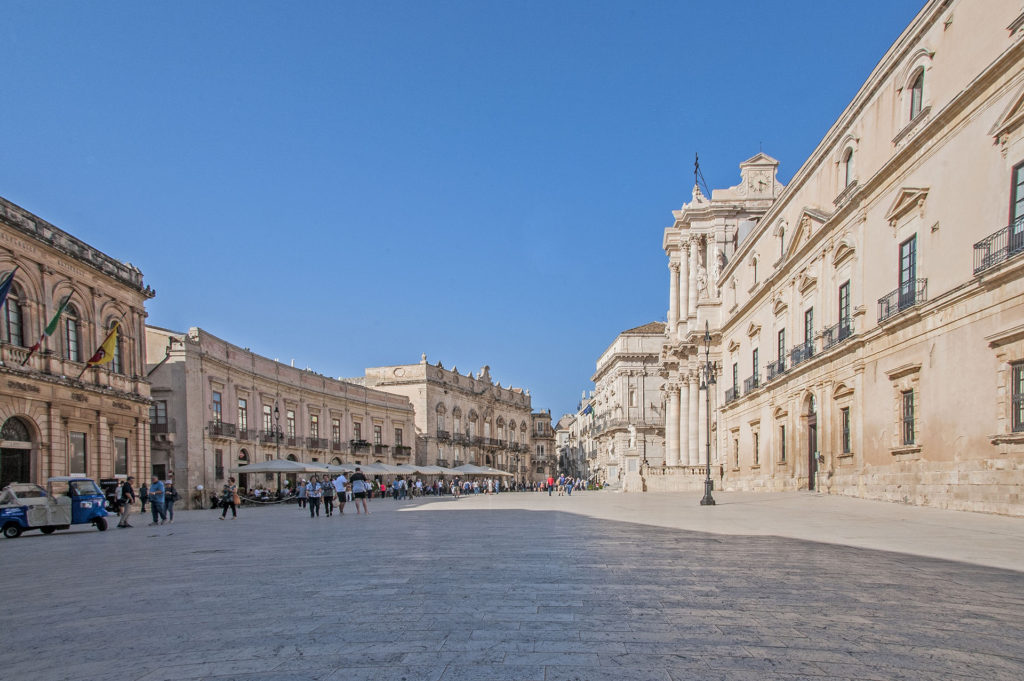Piazza del Duomo is characterised by a curious “exedra” or “eye” shape. Its design appears complex, but it is not random. Over the centuries, the spatial organisation has responded to newer needs and requirements, to the point of becoming an environment with an unusual shape, a compromise between the orthogonal layout typical of the Greek system and the curvilinear elements dating back to the late medieval transformations.
 The eastern side of the square, adjacent to the cathedral, is dominated by the Senatorial Palace, where the Greek temple dedicated to the goddess Artemis once stood, and the Archbishop’s Palace, whose origins date back to the Suevian imperial era in the mid-13th century.
The eastern side of the square, adjacent to the cathedral, is dominated by the Senatorial Palace, where the Greek temple dedicated to the goddess Artemis once stood, and the Archbishop’s Palace, whose origins date back to the Suevian imperial era in the mid-13th century.
Along the western side stands the Palazzo Beneventano del Bosco, dating back to the 14th century, consistent with late Renaissance architecture. Examples of this are the nearby buildings Francica Nava and Chiaramonte, despite some transformations and changes oriented towards the Baroque style. At the southern end of the square is the Church of Santa Lucia alla Badia, whose structure, which now opens onto the square, was part of a Cistercian monastery destroyed by the earthquake of 1693. At one time, the church was accessed from the side street, Via Pompeo Picherali.
During the 18th century the square also qualified as a “theatrical” place par excellence of the Baroque city, a preferred space for the
feast
of the city’s patron saint Lucia (St. Lucia).
In its particular morphology, Piazza del Duomo in Ortygia has also been an “inspiration hotspot” for many directors who have used it as a set for their films, such as “The Red Carnation”, based on the novel of the same name by
Elio Vittorini
.